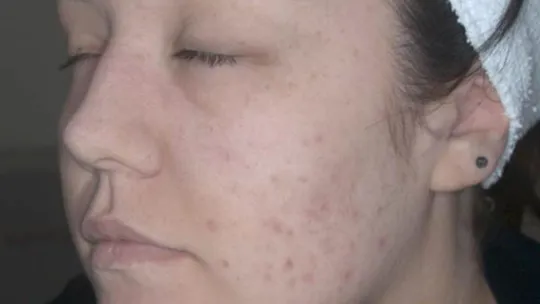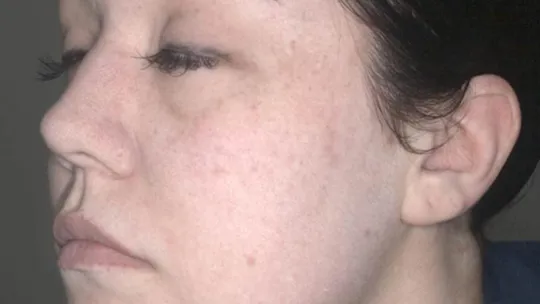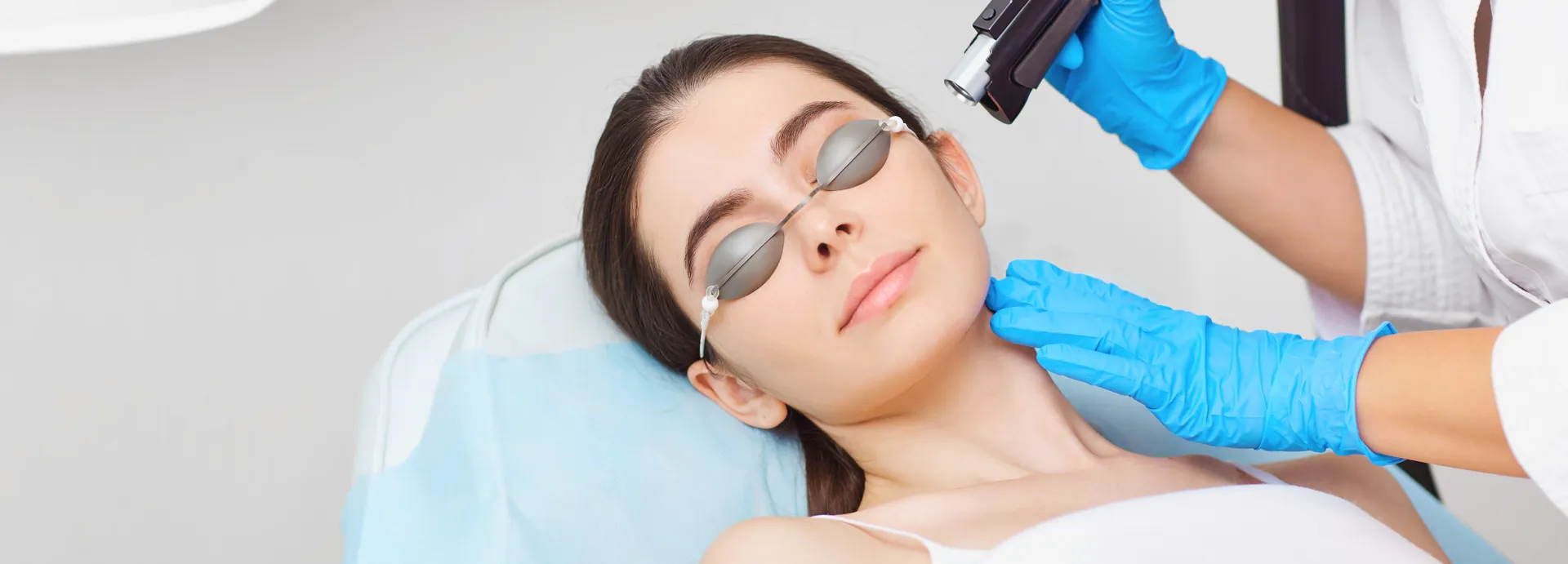Fractional Laser
Fed up of unwanted stretchmarks, scarring or lines and wrinkles?
Fractional laser treatments stimulate your skin’s natural healing process, resulting in an accelerated collagen production and renewal process that can take years off your skin.
Our most anti-ageing laser procedure, fractional laser can treat lines and wrinkles, improve overall skin tone and elasticity and restore a youthful glow. It’s now a popular solution for some of the more challenging skin problems some of us face.
Fractional laser resurfacing finally offers a solution for acne scarring, sun-damaged skin and stretchmarks too.
The 'after' photograph below shows results after 4 treatments.

BEFORE

AFTER
What are the benefits?
Fractional lasers are for those who want great results on conditions such as acne scarring, sun-damaged skin, stretch marks, lines and wrinkles, but also want to minimise ‘downtime’ (i.e. redness and swelling) as much as possible. They have been ‘fractionalated’, meaning they only directly treat small portions of the skin, but these areas then stimulate the other sections of skin to respond. We use ablative fractional lasers at University College Birmingham.
What is the downtime?
The skin will look and feel sunburned for up to 24 hours, then it will be red/bronzed in appearance for up to 10 days. From day 2-3, the skin will start to feel rough and flaky.
Are there any possible side effects?
The area will feel sunburned – this can be minimised by cooling the skin. The skin will also feel tight following the treatment, so it is recommended that you use Lynton Light Soothe Serum to relieve this.
How many treatments do I need for best results?
A course of six treatments, one every 3 to 4 weeks.
Treatment protocol
Pre-treatment protocol
The area to be treated should be free from make-up, perfume, deodorant and body/face creams.
There should be no active tan or fake tan in the area to be treated. Use of sunbeds or prolonged exposure to sunlight is not allowed in the month prior to treatment and an SPF 30 must be used on the area between treatments. Suntans must be left to fade completely before treatment can start. Fake tans and gradual tanning products must also be fully faded before treatment can commence.
We reserve the right to charge for any appointment booked but abandoned due to active sun tan or fake tan.
A medical history is taken at consultation, but we rely on you to inform us of any changes to this. We need to know of any medication you are taking, including those bought from a chemist or herbalist.
Make sure that you arrive in good time for your appointment. This will allow us to pre-cool the skin if this should be required.
Post-treatment protocol
Following treatment, the area will appear very red and may be swollen. It will feel hot and tender for several hours following treatment. The redness (similar to sunburn) and swelling may last a few days but can minimised with the application of cold compresses. Facial swelling can be reduced by sleeping with your head raised on pillows.
In order to minimise skin heating and to reduce the likelihood of skin reactions, the treatment area will be cooled after the procedure. Once you get home, you may like to apply a cold compress/wet flannels etc. If applying an ice pack at home, always put ice inside a clean plastic bag and wrap in a soft cloth. Do not allow ice packs or ice to come into direct contact with the skin.
While redness remains on the skin after treatment, do not indulge in heavy drinking, heavy exercise or going to a sauna. These activities may increase the redness of your skin.
The skin will also feel quite tight following treatment and using Vaseline, Lynton Light Soothe Serum, or a gentle moisturiser for a day or two following treatment can help to relieve this. Test for sensitivity on a small area of skin before applying to the whole face.
Starting on day 2-3, the skin will appear flaky and have a bronzed appearance as the epidermal debris comes to the surface – this generally lasts for about 5 days. This is a positive sign and indicates that the skin is regenerating. If required 4-5 days after your treatment, you can use a very light exfoliator to help remove the dry/flaky skin (providing the erythema has reduced and skin sensitivity has turned back to normal).
Keeping the skin well moisturised at this point will also help reduce the risk of tightness.
Avoid cosmetics for approximately 48 hours after treatment. Mineral make-up can be applied after this time, however when removing, use a very gentle cleanser and a lot of water and try to avoid vigorously rubbing the skin, as this may cause irritation. If the skin at the treatment area becomes broken, make-up should be avoided until the area is completely healed.
Avoid hot baths/showers for 24 hours.
Do not pick at any flaking or crusting that may form.
The skin will usually return to normal by day 7 to 10, although some flakiness may remain for up to 14 days.
Use a sunscreen (SPF 30+) and protect the area from sunlight as much as possible between treatments and for at least one month after treatment ends. Failure to do this can lead to sunburn and hyper-pigmentation of the treated area. (Most cases of changes in pigmentation occur when the treated area has been exposed to sunlight or in people with darker skin types).
If blistering occurs, contact the clinic immediately for further advice. Keep the area clean and dry and allow to heal naturally. Do not use any lotions or creams on open skin as this may increase the risk of infection. DO NOT pick grazes or blisters, as this may increase the chance of a scar occurring. Once the skin has healed, a high protection sunscreen should be used daily for 12 months to prevent pigmentation changes to the skin.
Important information
Training clinic
Treatment Rooms is a professional training clinic for undergraduate students studying the Aesthetics BA (Hons) / FdA degree at University College Birmingham, which offers cutting-edge non-surgical treatments at a fraction of the usual cost.
Our trainee aestheticians are supervised by highly-qualified lecturers with a wealth of industry experience and undergo thorough training before undertaking client treatments. As the students are continually learning and honing their skills, please bear in mind that on some occasions treatments may take longer than stated.
Consultation
Before we can perform this treatment, you will need to come in for a consultation. During this, we will assess your needs to check for suitability. Please allow up to one hour on top of the treatment time for this.
Book your appointment
Please be aware, as we are a training clinic, some treatments are only offered on certain days of the week or at certain times in the academic calendar. Please enquire for more information.
To book an appointment, please call our clinic reception on 0121 232 4238. Alternatively, you can complete our online booking enquiry form and a member of the team will be in contact. We do receive a high volume of email enquiries, so please allow up to 2 working days for a response.
Please note that our clinic is usually open Monday-Friday, during term time only. We are closed over the Christmas and Easter holidays, and for Reading Week in October and March. For full details, please ask a member of the team when booking your appointment.






